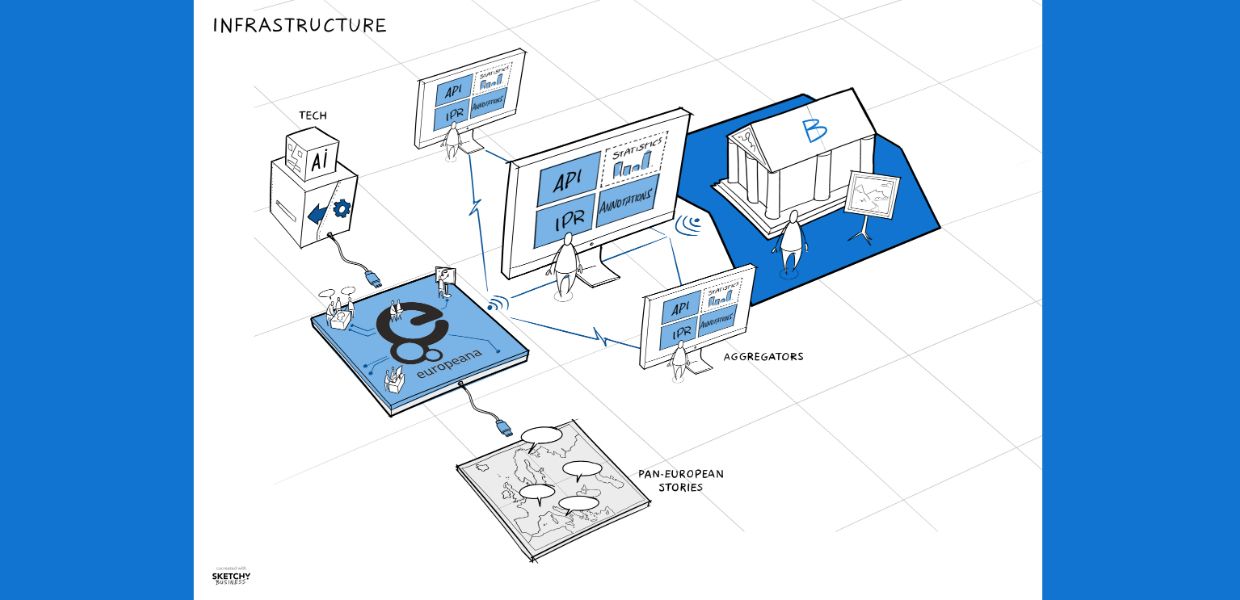Inefficiencies in technical infrastructure make it harder for institutions to share their collections online effectively. To counter this challenge, the Europeana Initiative will invest in supporting innovation activities that keep the infrastructure aligned with state-of-the-art tech.
A more efficient aggregation infrastructure
The first infrastructure we’re talking about in this context refers to the mechanisms and processes that aggregators and their networks of cultural heritage institutions use to provide and share cultural heritage material - that’s getting data and content into Europeana. Europeana has already developed an in-house bespoke system for efficient ingestion of data and content.
Chair of the Europeana Aggregators’ Forum, Marco Rendina, was one of the members of the Expert Group on Digital Cultural Heritage and Europeana (DCHE) that produced the recommendations this strategy is based on. Marco says, 'The release of an efficient and shared ingestion platform has been long-awaited by aggregators in order to speed-up and streamline the publication process on Europeana. In the new Europeana strategy, this has become one of the top priorities, and it will lead to an improved aggregation infrastructure that will be accessible directly by aggregators, and later on potentially also by institutions, for the ingestion, validation, enrichment and publication of cultural heritage content in the Europeana collections platform, overcoming the actual bottlenecks and finally making it easy and rewarding for cultural heritage institutions to share their content in Europeana.’
Better connected content
Next, there’s a layer of infrastructure that makes the collected data and content accessible. Here we’re talking about APIs that support the use of material in other sectors like education, research and the creative industries. The set of Europeana APIs will be improved, documented further and promoted.
Beyond just API access though, developments will extend the 'entity' collections, which link items to concepts that include topics, people, places and organisations. This provides the backbone for the Europeana collections website’s new browsing experience.
Content that's easier to find and browse
And then, once data and content is available on Europeana, it needs to be easy to find and browse. Work in this area will include further developments to the functionality on the Europeana collections website as well as making Europeana content more accessible to search engines. And giving people using the site more options to create, organise and save collections for their own use.
Dasha Moskalenko, Europeana Foundation’s Manager for Service Experience says, ‘We want to make it easier for people to explore and interact with our abundant collection of cultural heritage items. We want people to quickly find what they are looking for and get inspired by content that they didn't know existed. In the coming five years, we will challenge ourselves to design an experience that will immerse people in our shared cultural heritage. They will discover relationships between items located across institutions and countries and learn how our cultures connect, the similarities between them, and find understanding for our differences.’


